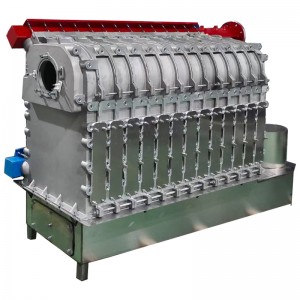Aug . 31, 2024 11:59 Back to list
types of aluminum casting
Types of Aluminum Casting An Overview
Aluminum casting is a versatile manufacturing process that involves pouring molten aluminum into a mold, allowing it to solidify, and then removing the finished part. This process is widely used across various industries due to aluminum's unique properties, including its lightweight nature, corrosion resistance, and excellent machinability. There are several types of aluminum casting methods, each of which has its own set of advantages and applications. This article will explore the most common types of aluminum casting.
1. Sand Casting
One of the oldest and most widely used methods of aluminum casting is sand casting. In this process, a mold is created using a mixture of sand and a binding agent. The molten aluminum is poured into the mold cavity, where it cools and solidifies. Sand casting is particularly favored for producing large parts and can accommodate complex shapes. While it may not offer the same level of surface finish as other methods, it is cost-effective and suitable for low to medium production runs.
2. Die Casting
Die casting is a high-pressure casting technique that provides excellent dimensional accuracy and a smooth surface finish. In this process, molten aluminum is injected into a steel die under high pressure. Die casting is ideal for producing large quantities of small to medium-sized parts with intricate geometries. The main advantage of die casting is its speed, as it allows for rapid production rates. However, the initial cost of creating the die can be high, which makes this method most economical for high-volume production.
3. Investment Casting
types of aluminum casting

Also known as lost-wax casting, investment casting is a precise method used to create complex and detailed aluminum parts. In this process, a wax pattern is coated with a ceramic shell, which is then heated to remove the wax, leaving a hollow mold. Molten aluminum is then poured into the mold, resulting in a high-quality finished product. Investment casting is particularly useful for low-volume production runs and applications where precision and surface finish are critical, such as in aerospace and medical devices.
4. Permanent Mold Casting
Permanent mold casting involves the use of reusable metal molds to create aluminum parts. This method is suitable for medium to high production runs and provides good dimensional accuracy and surface finish. The molds are preheated to improve the flow of molten aluminum and reduce the cooling time. While the initial setup costs can be higher than sand casting, the durability and reusability of the permanent molds make this method economically viable for various applications.
5. Gravity Die Casting
Similar to permanent mold casting, gravity die casting relies on gravity to fill the mold with molten aluminum. The process involves pouring the aluminum into a mold without the use of pressure. While it may not be as fast as die casting, gravity die casting is easier and more cost-effective for small to medium-sized parts. It also allows for better control over the solidification process, reducing the risk of defects.
Conclusion
In conclusion, the choice of aluminum casting method depends on factors such as the complexity of the part, production volume, cost considerations, and desired surface finish. Whether using sand casting for large components or die casting for high-precision parts, each method offers unique advantages that cater to a wide range of industrial applications. As technology advances, the efficiency and effectiveness of these casting methods continue to evolve, ensuring aluminum casting remains a vital component in modern manufacturing.
-
Durable Centrifugally Cast Iron Water Main Pipe
NewsAug.11,2025
-
Centrifugally Cast Iron Water Main Pipes for Reliability
NewsAug.10,2025
-
High-Quality Centrifugally Cast Iron Water Main Pipes
NewsAug.09,2025
-
Durable Cast Iron Water Main Pipe & Drainage Solutions
NewsAug.08,2025
-
Buy Cast Iron Pipe: Premium Ductile Iron & Drain Solutions
NewsAug.07,2025
-
Durable Cast Iron Water Main Pipe | Buy Ductile Pipe
NewsAug.06,2025


